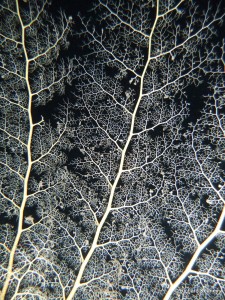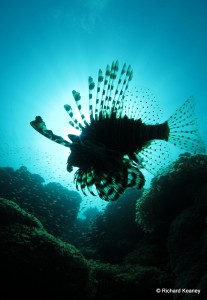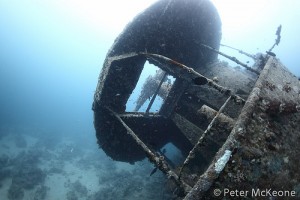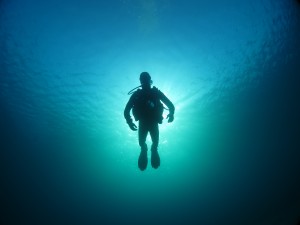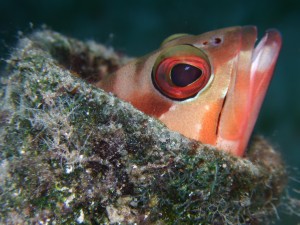The INON Compact Camera Course is a comprehensive course ensuring that you gain an understanding of all aspects involved in photography. The course itself can be adapted to suit various different camera makes and models, from simple point and shoot cameras to cameras with the full manual settings.
The course is split into 6 different sections. You will start off by learning about camera basics such as what to look for when purchasing a camera so that you can get the correct model to suit your diving and photography needs. This will lead on to discovering the various settings on your camera that will be most useful and yield the best results. You will the progress on to learning the various techniques to restore colour to your pictures using either Natural Light or Artificial Light. Without a doubt, the most interesting section in the course will be the Tips and Techniques section. Here you will learn how to truly make your pictures stand out, from basic compositional techniques to creative lighting techniques, you are sure to be pleased with the end result!
Theory sessions will take place in the spacious classroom and the practical sessions will take place on different sites allowing you to practice the techniques learned during the course in many different conditions, giving you a degree of flexibility that would otherwise take months if not years to develop.
Section 1: Light
This section will revolve around the properties of Light and its relationship with water.
Section 2: Camera Basics
Here you will learn all about the limits and potential of your camera.
Section 3: Natural Light Techniques
In this section you will learn how to use the natural light available to restore colour to your pictures and which method will yield the best results. Discussions will include the various white balance options, filters and how best to shoot with these methods.
Section 4: Artificial Light Techniques
Restoring colour using built in flashes or external strobes. This section will cover how to use these methods to get the maximum amount of colour back into your photographs, to be able to shoot in low light conditions and how to start getting creative with your lighting.
Section 5: Lenses
Here we will expand on the built in lens and start discussing the various types of accessory lenses and what they are useful for.
Section 6: Tips & Techniques
Rounding off the course with various ways to make sure you consistently get that ‘wow’ factor in your pictures. Topics discussed will revolve around your approach to subject selection, various ways to use colour to your advantage, compositional and lighting techniques and finally ways to get really creative.
Testimonials
Pete McKeone
“I have just completed the INON Compact Camera Course at Black Rock; it was a very complete course over 6 days including 3 days on MV Aeolus, a very luxury liveabord. The course covers all aspects of using your camera and flash with lots of in water practice to try out what you have just learnt. My instructor; James; was very enthusiastic and knowledgeable. I would recommend this course, especially to those not getting the results they expect from their camera, and doing it at Black Rock makes for a very nice setup.”
Philipp Scherzer
“I did the INON Course by the end of 2011 as I wanted to start to take a look into underwater photography. I’m familiar with the photography on land and it is good to have a few basic skills.
There are several lectures on lenses, flash, whitewashing etc as well as some more basics about photography if you are not so familiar with the issue.
It was a 3 day course with 6 dives all together. Just about the right amount of time to get you through the basics and to a point from where you can continue on your own to improve the pictures you take.
As the equipment is expensive it’s nice that you get a camera with a case and different types of lenses and a strobe. So you don’t have to worry and buy everything before. It gives you a look at what equipment you need at the beginning and which things are for more experienced
The course itself is way more challenging than I expected. I had the idea that it would be the same as taking pictures on land. But in the end it’s much more difficult. It’s hard to tell, it’s some small thing that have a huge impact. Eg. If I’m too close to an object on land I just take a step back. In the water you have to swim back, and while doing so, it’s likely that the fish is gone already or moved into another place. You have to think ahead to get what you want as there is not too much time for adjustments under water
But it was nice to see the improvement from each session. The debrief of every dive is the discussion of the pictures. Things which were wrong, what settings would be better or where you should have been positioned. At the next dive you have a chance to adjust the mistakes and you see a significant improvement.
All together the course is definitely worth it. James, my instructor, is really into underwater photography and I got a lot of good advice from him.”
Deborah Allen
“I signed up to the INON 1 course because I wanted to improve the quality and consistency of my photos. The course was taken by James Seymour, an in-house dive guide and photography expert.
The course covered all the theory basics and there was plenty of time to practise the techniques on the house reef and other dive sites round Dahab. There was also time taken to critique the photos which helped you refine and rework. The pace was good and my photos noticably improved over the 5 days.
I would definitely recommend this course to beginners or to people who have had a compact camera for a while and want to improve without investing thousands in large expensive kit, or spend hours on photoshop.”




